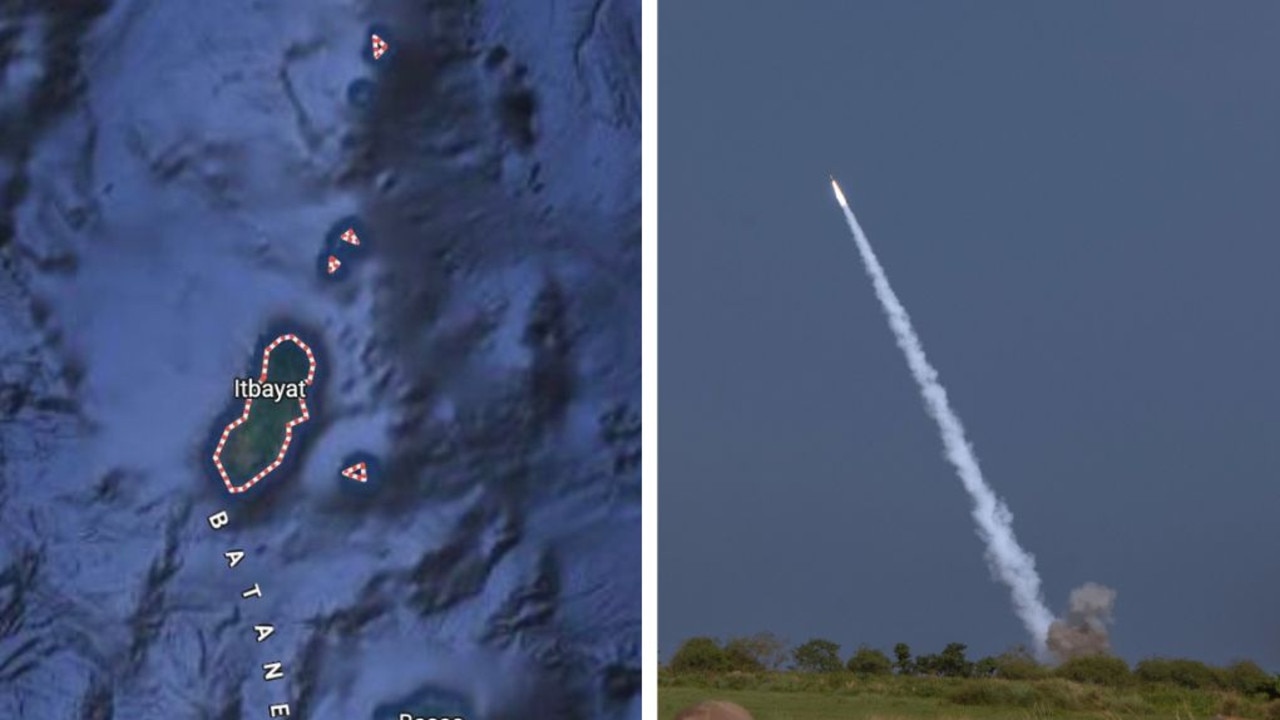[ad_1] Two tiny islands where residents live a simple lives and have little communication with outside world are finding themseleves in the middle o
[ad_1]
Two tiny islands where residents live a simple lives and have little communication with outside world are finding themseleves in the middle of a potential mother of all conflicts.
The Philippines could play a crucial role in any potential conflict between the United States and China, with two tiny islands potentially becoming a prime strategic location in the hotly contested South China Sea.
Recent joint military drills between the US and Philippine troops have served as a show of support for the Philippines as China‘s assertiveness in the region continues to mount.
China claims almost the entire South China Sea and continues to shun an international ruling that the assertion has no legal basis. The US has repeatedly challenged China’s claims in the region, sending military ships and aircraft on “freedom of navigation” missions.
Tensions have been prodded by both sides over the territory, with a recent confrontation involving a US warship “illegally” entering China’s purported no-go zone making global headlines.
And in the middle of the heat sits the tiny Philippine islands of Itbayat and Basco.
The tiny settlements, which make up part of the province of Batanes, may become a potential battleground between the United States and China in the unfortunate event of war.
While seemingly insignificant in size – barely visible dots on a map amid a blank sea – their location in a sea under dispute has placed them in a precarious position.
Sitting just 150km from Taiwan’s southern edge, analysts believe their location may place them in danger should tensions spill over.
Living in this remote region is challenging for locals, with Itbayat often being inaccessible for weeks at a time due to its isolated location. The island itself appears impregnable, with small ports carved into the rocky cliffs and steep steps that need to be navigated to reach a boat.
Fishermen in these remote areas of the South China Sea have reportedly been driven out of their traditional fishing areas by Chinese “poachers”, prompting the military to set up a base on Mavulis Island at the northernmost point of the Philippines territory.
Few residents have access to modern amenities such as televisions, with a network of relayed messages through the church congregation or from house to house often proving to be more dependable than the erratic phone signal.
Meanwhile, the US and the Philippines recently made a deal allowing the US to use an increased number of bases in the Philippines, including one near Taiwan, which China considers a part of its territory. The outward display of support has angered China, with officials accusing the US of endangering regional peace and trying to drive a wedge between Manila and Beijing.
The joint live-fire exercise conducted by the US and Philippine troops on Wednesday was the first of its kind in the contested waters, with rockets fired at a decommissioned Philippine Navy corvette representing an enemy vessel.
Guided bombs dropped by US Marines F-35B Lightning II fighter aircraft swiftly sunk the dummy ship for cameras around the world.
The drills, which involved some 18,000 troops, aimed to boost Manila’s military capability while demonstrating the strength of the US-Philippine alliance.
The exercises have included helicopter landings on a Philippine island off the northern tip of the main island of Luzon, as well as a showcase of the US Patriot missiles, considered one of the best air defence systems in the world.
“The goal of our campaign in this region is to deter conflict from ever occurring,” Major General Joseph Ryan told reporters.
“We don‘t want a war with the PRC [People’s Republic of China]. We do not want that, we do not desire that and we are not provoking that. A war with the PRC is good for nobody.”
“The message sent is we‘re ready, we’re capable, we’re prepared. We’ve got a great partnership here. And we mean business.”
Despite China‘s objections, the Philippine government has maintained its right to exercise within its territory, citing the country’s inviolable right to defend itself.
Philippine President Ferdinand Marcos, who has sought stronger defence ties with the United States, sat in an observation tower with US and Philippine officials watching the live-fire drill on Wednesday.
Marcos is scheduled to meet with US President Joe Biden at the White House next week to discuss the growing tension over the South China Sea and Taiwan.
In a recent interview discussing Washington’s presence in the region, Marcos aptly summed up the scenario in a short sentence.
“The situation is heating up.”
[ad_2]
Source link



COMMENTS